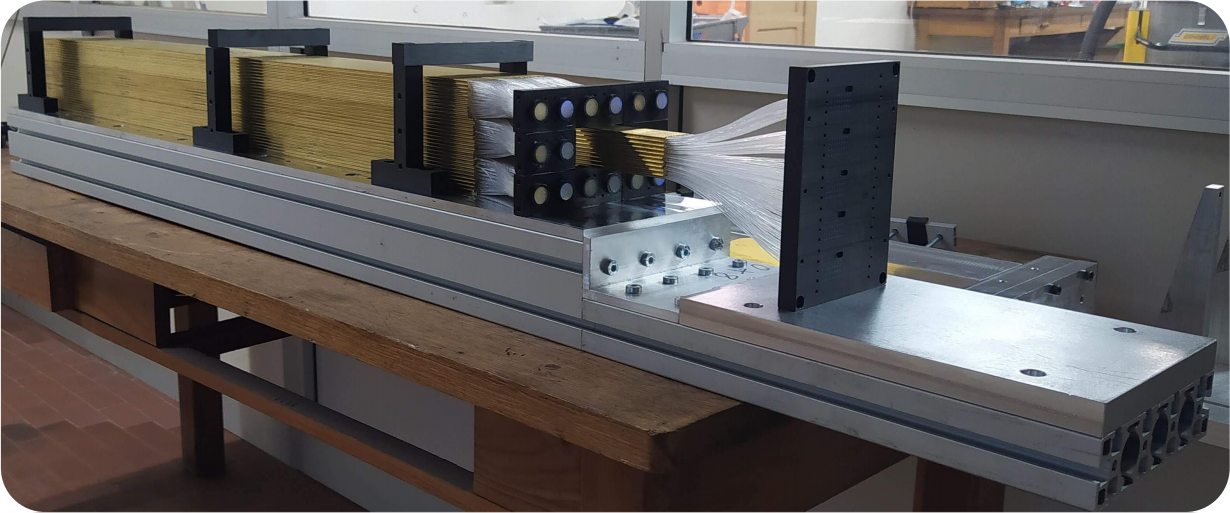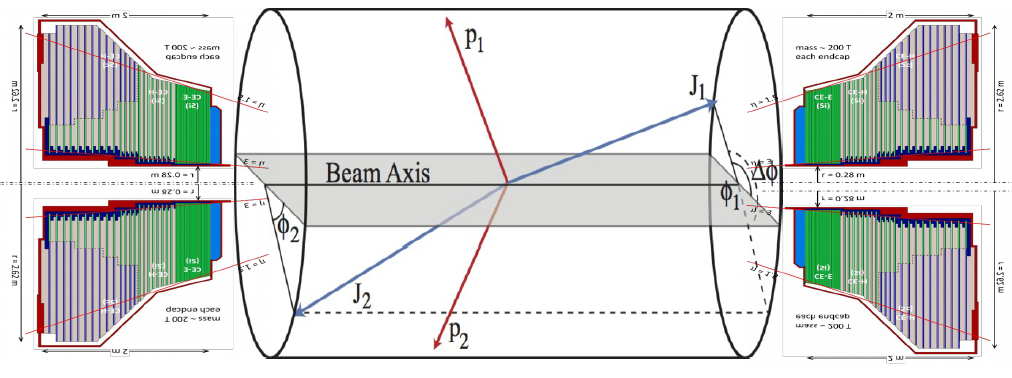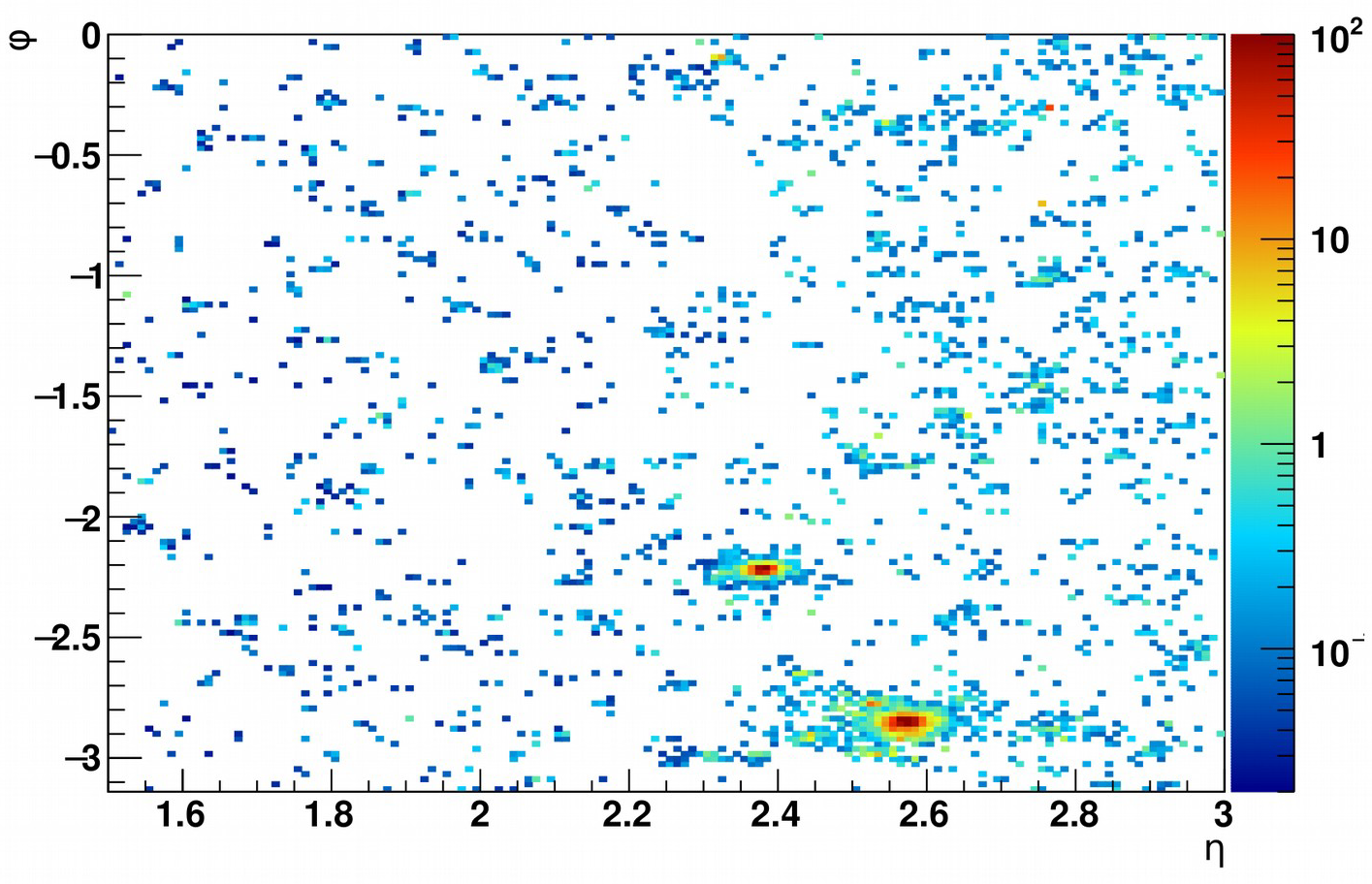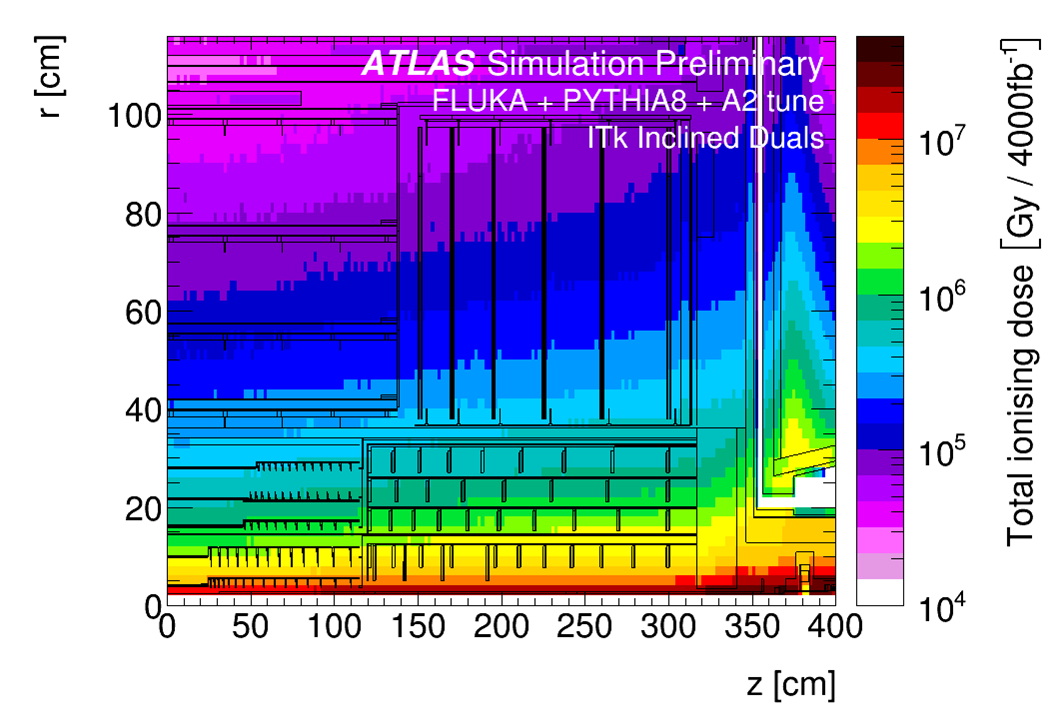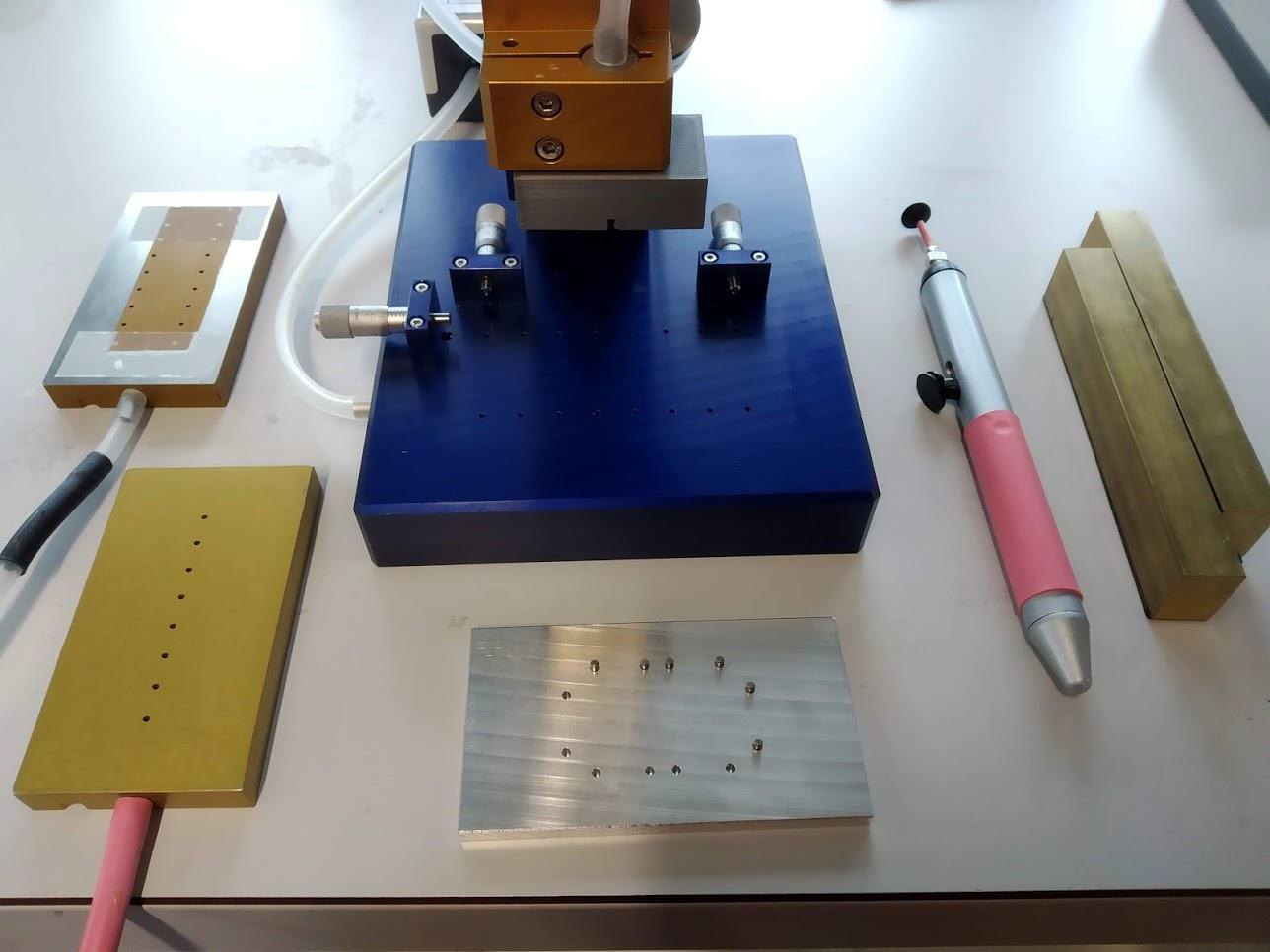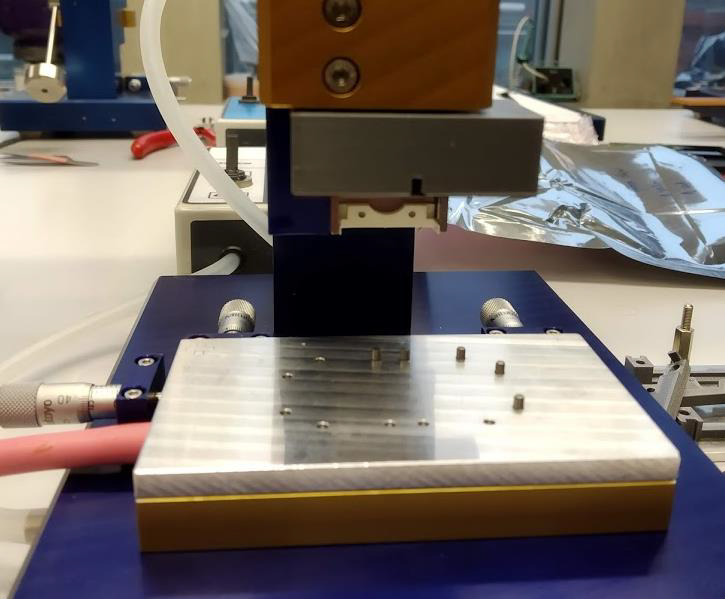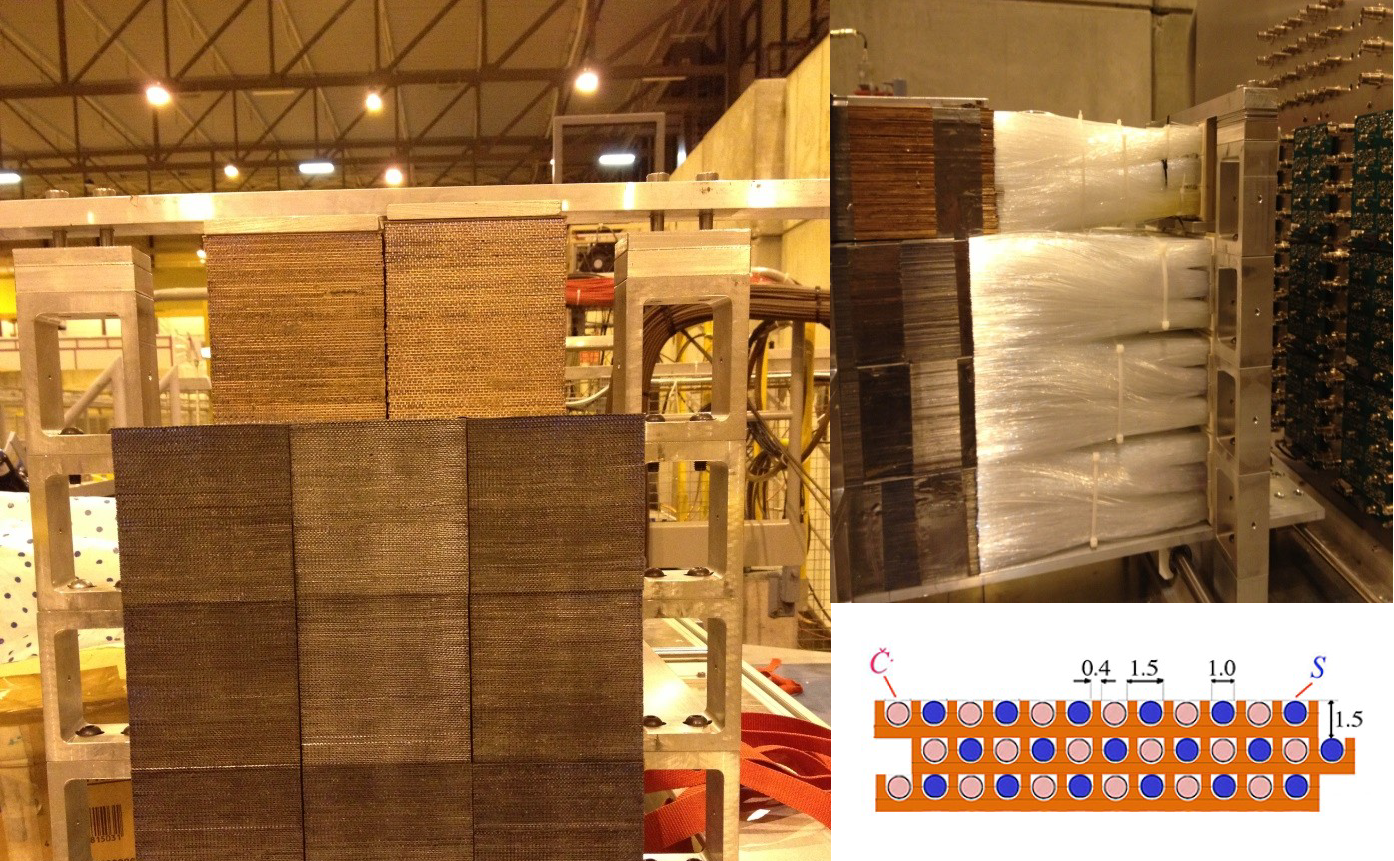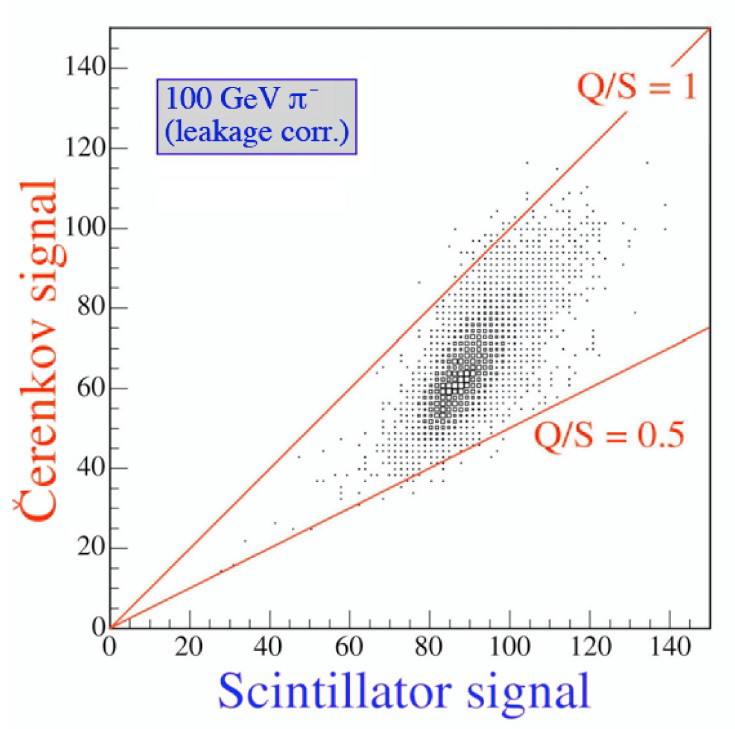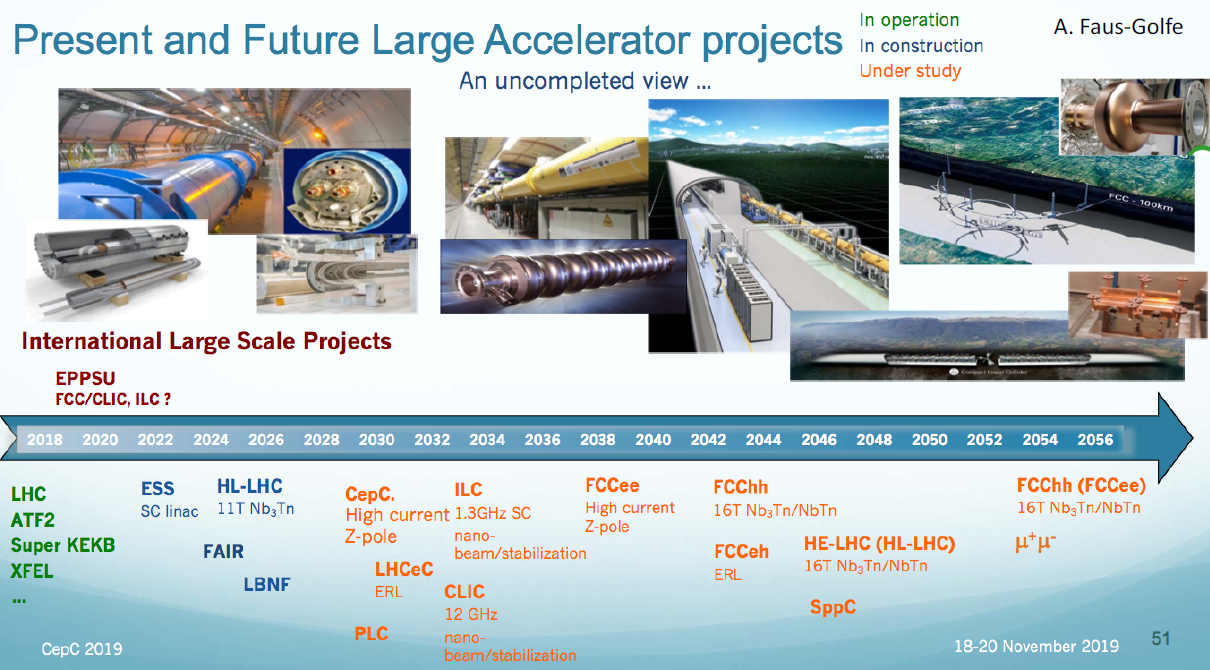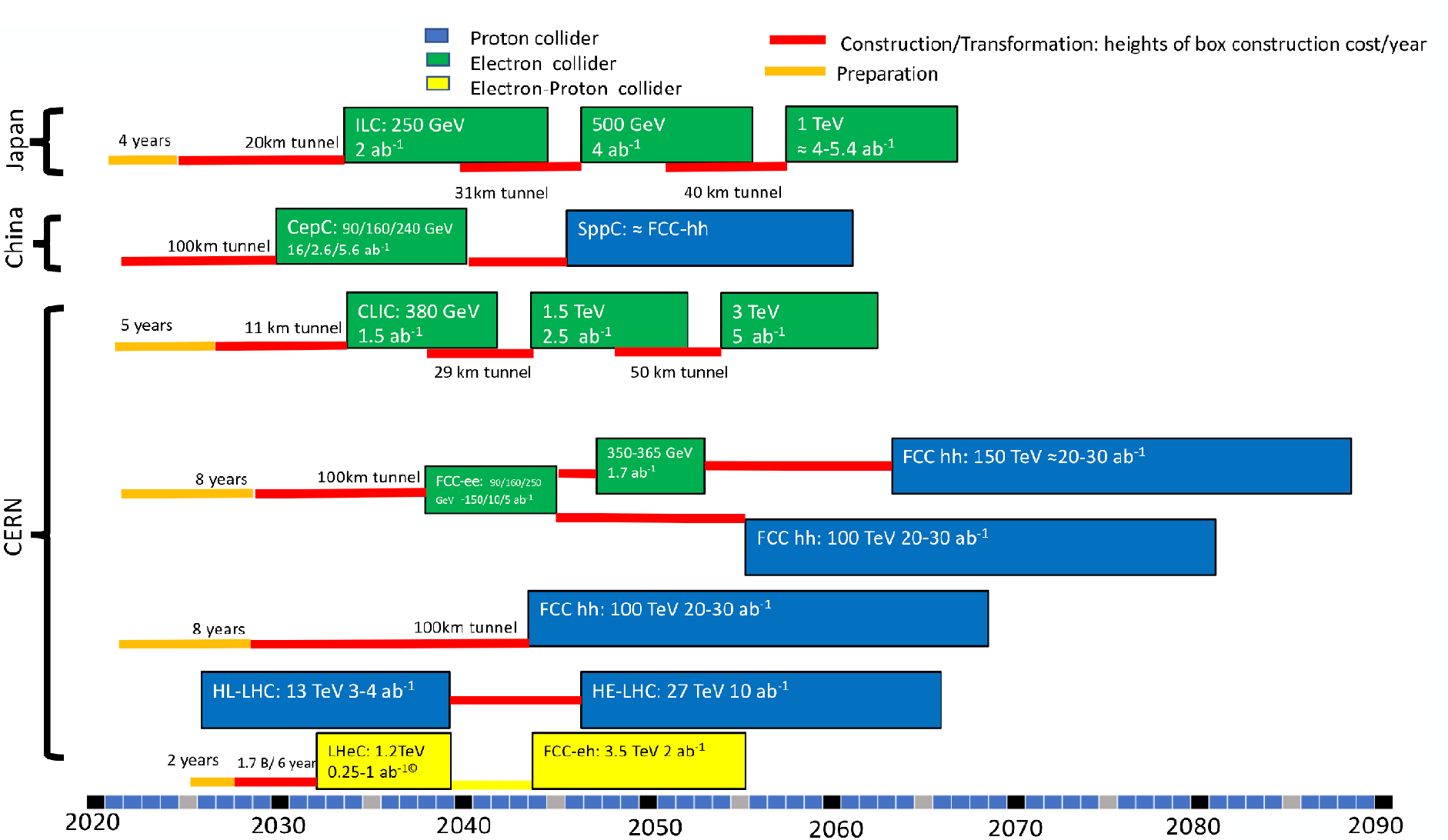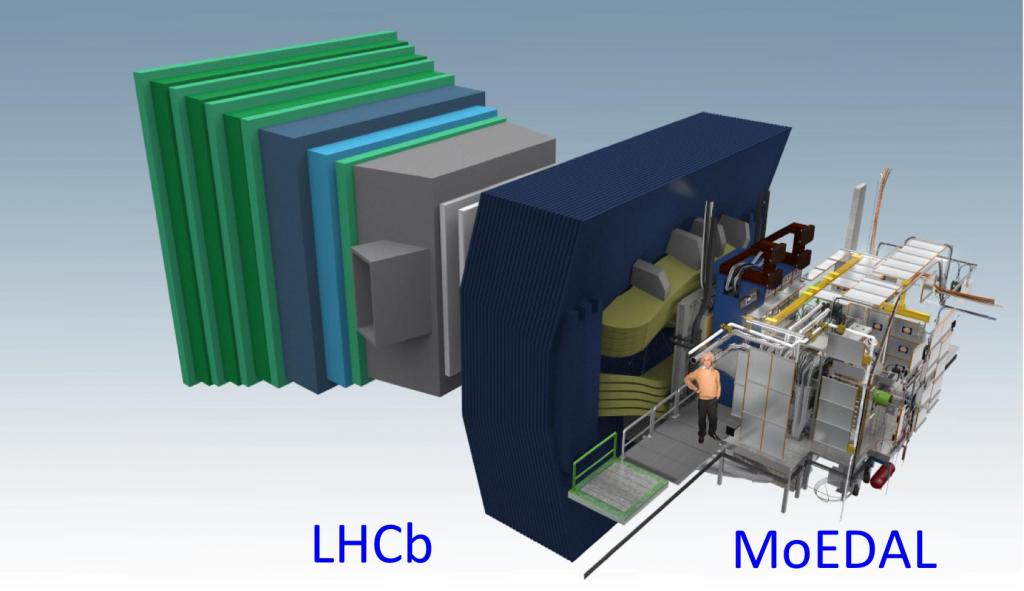Seminars
Upcoming Seminars
Past Seminars
12. 02. 2021. Novel Brass Capillary Structure for the Dual Readout Calorimeter
Speaker: Dr. Aneliya Karadzhinova-Ferrer, Ruđer Boškovic Institute, CDSE
Location: video conference
Time: 12.02.2021 at 11:00
Abstract:
Dual-Readout (DR) calorimetry is a well known detection technique with impressive R&D track record program of over 20 years. Its design is intended for detection of both electromagnetically and hadronically interacting particles with unprecedented precision. The DR calorimetry was recently proposed in the framework of IDEA for both FCCee (Future Circular Collider) and CEPC (Circular Electron Positron Collider).
In this seminar I will present the construction of a novel cost-effective proof of concept prototype tower for the future Dual-Readout Fiber Calorimeter, which took place at the main workshop of RBI. This fiber-based detector offers the most promising application for the DR calorimetry. A short description of the IDEA detector (Innovative Detector for Electron-positron Accelerators) and the DR calorimeter will be given, followed by a detailed description on the tower assembly tooling and quality control instruments. The procedures and methods used in the construction and the quality control of the tower are also defined. The first proof of concept prototype has been scaled to allow us to study and verify the ability to detect and measure the components of an electromagnetic shower. The test beam data taking is expected to take place in DESY during 2021.
26. 08. 2020. CMS High Granularity CALorimeter: meeting the challenges of HL-LHC
Speaker: Dr. Pedrame Bargassa, LIP, Lisbon, Portugal
Location: Ivan Supek Wing (I Wing), RBI
Time: 26.8.2020 at 11:00
Abstract:
After 2026, the LHC will enter a new era of data taking with the High
Luminosity (HL) phase. While detectors will be upgraded to sustain the
harsh radiation, a peak instantaneous luminosity of 7.5e34 cm-2s-1 will
result in a peak mean number of pileup interactions of ~200. This will
be a tremendous challenge to data analysis, hitting the physics
potential of HL-LHC if not mitigated. During the presentation, I will
present the future High Granularity CALorimeter (HGCAL) of CMS which
will be operational during this new phase. After presenting the detector
itself, the talk will cover related aspects of algorithms, timing,
physics performance, and how this new detector is to meet the challenges
of HL-LHC.
17. 01. 2020. Testing materials for their radiation hardness: The experience at CERN for the HL-LHC experiment upgrades
Speaker: Dr. Nicola Pacifico, CERN
Location: Ivan Supek Wing (I Wing), RBI
Time: 17. 01. 2020 at 10:30.
Abstract:
The Detector Technology group of the CERN Experimental Physics Department has initiated a campaign aimed at identifying
radiation hard materials for their use in HL-LHC experiment upgrades. The irradiation is performed mainly with gamma photons
from a 60Co source, at different facilities. The sample typology and their testing are conceived to allow the qualification with
one or more commonly employed ASTM and/or ISO standards. In this seminar an overview of the characterization efforts will be given, describing the irradiation facilities, with their specific
advantages and drawbacks, the employed testing standards and the testing infrastructures as well as an overview of good
practices required in the selection and testing of materials for harsh radiation environments.
19. 12. 2019. Assembling a CMS Phase 2 digital pixel module prototype
Speaker: Matej Roguljic, Ruđer Boškovic Institute
Location: Ivan Supek Wing (I Wing), RBI
Time: 19. 12. 2019 at 11:00.
Abstract:
The LHC is preparing an upgrade which will increase the luminosity by a factor of ten.
For this High-Luminosity LHC programme (HL-LHC), the CMS tracking detector will require many
improvements such as increased radiation hardness, higher detector granularity and increased bandwidth.
A new tracking system, the so-called Phase-2 upgrade, will need to be built to achieve this.
The Phase-2 Inner Tracker (IT) is designed to maintain or even improve the tracking and vertexing
capabilities under the high pileup (140 - 200 collisions per bunch crossing) conditions of the HL-LHC.
IT will be built from thin silicon pixel detectors segmented into pixel sizes of 25 x 100 um2 or 50 x 50 um2.
The assembly of a Phase-2 digital pixel module prototype at the Paul Scherrer Institute will be presented in this seminar.
28. 11. 2019. Dual-Readout calorimetry
Speaker: Prof. Roberto Ferrari, INFN Pavia
Location: Ion Beam Facility, Van De Graaf lecture room, RBI
Time: 28. 11. 2019 at 11:00.
Abstract:
The Dual-Readout calorimetry, developed to overcome the main limiting
factor in hadronic energy measurements, has been thoroughly
investigated by the DREAM/RD52 collaboration during the last 15 years.
The latest results show that very interesting performance may be
obtained for both electromagnetic and hadronic showers, together with
excellent standalone e/π separation. After an introduction to the
working principles, the most recent results and the plans (and the
expected performance) for dual-readout calorimetry in the CepC/FCC-ee
environment, will be presented and discussed.
28. 11. 2019. Future colliders: where, how and why?
Speaker: Dr. Gabriella Gaudio, INFN Pavia
Location: Ion Beam Facility, Van De Graaf lecture room, RBI
Time: 28. 11. 2019 at 10:00.
Abstract:
The LHC physic program covers, with its already approved upgrade phases, about until 2040. In the meanwhile the panorama of proposed
both linear and circular colliders is getting reacher and reacher. The
seminar proposes an overview of the proposed machines, from the point of view of both the possible physics reach and the technological challenges.
11. 7. 2019. Characterization of semiconductor detectors using laser Transient Current Technique
Speaker: Dr. Matti Kalliokoski, Rudjer Boskovic Institute
Location: Ion Beam Facility, Van De Graaf lecture room, RBI
Time: 11. 7. 2019 at 14:00.
Abstract:
Transient Current Technique (TCT) is one of the principal tools for studying solid state particle detectors.
In a TCT-setup, the signal current of the charge carriers is directly amplified and read out, and thus their
movement can be analyzed with high time resolution. By combining the signal output with position information,
locations of defects and other non-uniformities can be mapped, and their effect to the charge collection
efficiency can be studied. In this talk I present results of scans with the laser-TCT setup at the Ruder
Boskovic Institute in characterizing various silicon and CdTe detectors.
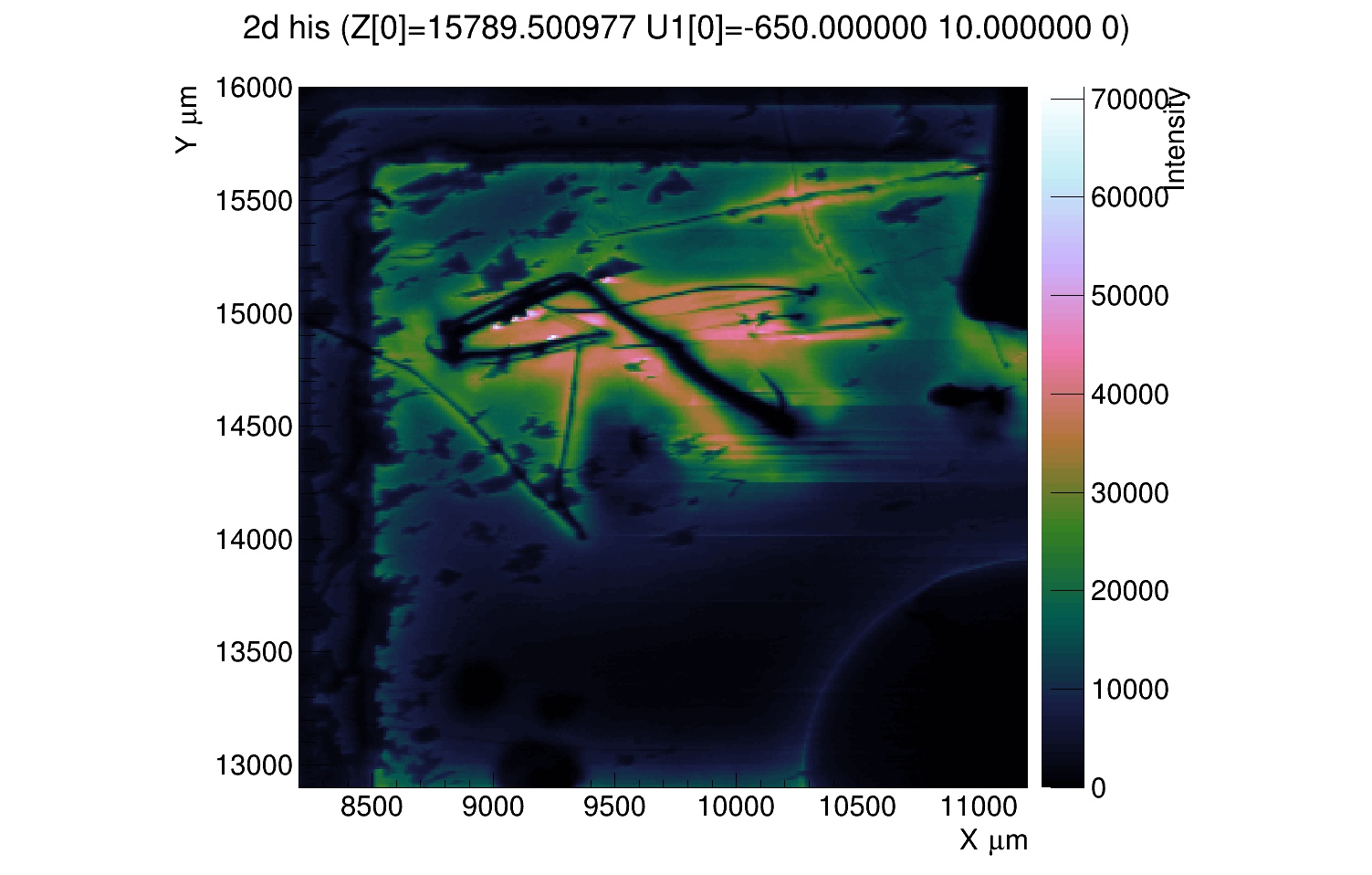
TCT measurement of CCE of an area of a CdTe detector.
8. 7. 2019. Particle detectors for high energy ion beam applications
Speaker: Prof. Kamiya Tomihiro, University of Gunma
Location: Lecture hall Wing I, RBI
Time: 8. 7. 2019 at 12:00.
5. 6. 2019. Testing for Single Event Effects due to ionizing particles in microelectronics VLSI circuitry
Speaker: Dr. Fco. Rogelio Palomo Pinto, University of Seville
Location: Ion Beam Facility, Van De Graaf lecture room, RBI
Time: 5. 6. 2019 at 14:00.
Abstract:
The seminar will discuss how to test for Single Event Effects due to ionizing particles in microelectronics VLSI
circuitry. The high density of circuits, the small size and the diversity of effects justify the use of nuclear
microscopy techniques for SEE testing. By simulation we can assess the chip vulnerability to SEE. A microprobe end
station is the experimental perfect match to generate physical sensitivity maps for the chip due to the pinpointing
beam accuracy. The microbeam technique for SEE sensitivity map was developed by the author in the Seville microprobe
facility for a less demanding integration scale (500nm). The RBI microprobe has better resolution, so it is the
perfect tool for nanometric technologies such as the one present at the 65nm (2x2 mm2 chip, target blocks smaller
than 20x20 um2).
7. 5. 2019. Building a new pixel detector for the CMS experiment at the High Luminosity LHC
Speaker: Dr. Devdatta Majumder, University of Kansas
Location: Ion Beam Facility, Van De Graaf lecture room, RBI
Time: 7. 5. 2019 at 11:00.
Abstract:
The innermost component of the CMS detector is a pixel tracker. It is used to identify proton-proton
collision interaction points and reconstruct bottom and charm hadron decays. Hence this detector is
important in identifying jets from heavy flavour quark fragmentation. The current pixel detector will
remain operational until about 2023. The LHC will henceforth be upgraded to collide proton beams at
an intensity about five times the present value. A new pixel detector is being designed (Phase-2 upgrade)
to cope with the high radiation and collision rates at the high luminosity LHC. In this talk, I will
discuss the ongoing research and development activities on Phase-2 pixel detector, focusing on those
conducted at CERN by the various research groups.
3. 5. 2019. Semiconductor detector research and development at the Helsinki Institute of Physics (HIP)
Speaker: Dr. Eija Tuominen, Helsinki Institute of Physics
Location: Wing 1 lecture room (Supek), RBI
Time: 3. 5. 2019 at 11:00.
Abstract:
The Helsinki Institute of Physics (HIP) is a physics research institute that is operated
jointly by the University of Helsinki, Aalto University, the University of Jyvāskylā, the
Lappeenranta-Lahti University of Technology, and the Tampere University. HIP Detector
Laboratory is a national infrastructure supporting Finnish experimental research on detector
development activities. For decades the laboratory has provided premises, equipment and
know-how for research projects developing semiconductor radiation detectors for large
international particle and nuclear physics experiments, for medical imaging and for nuclear
safety applications.
One of our long-term activities has been the development of radiation hard silicon detectors for future very high luminosity collider experiments, especially for the upgrade of CERN Compact Muon Solenoid (CMS) particle tracking detector entering into High Luminosity Large Hadron Collider (HL-LHC) era. Our approach has been the implementation of strip and pixel detectors made of oxygen rich Magnetic Czochralski silicon (MCz-Si) wafers produced in large quantities by Okmetic Ltd located in Vantaa, Finland. Detector fabrication has been carried out at the semiconductor processing clean room premises of our strategic partner Micronova Nanofabrication Centre.
Furthermore, the HIP Detector Laboratory participated in the production and quality assurance (QA) of the Phase I upgrade of the innermost pixel detector system of the CMS Tracker experiment. A bare CMS Tracker pixel module consists of one silicon pixel detector and 16 read-out CMOS circuits (ROC) that are flip-chip (FC) bonded to the pixel detector. Altogether, one pixel detector module has about 67 000 pixels. By the end of 2016, we tested and delivered about 20% of the modules needed in the CMS Tracker Phase I pixel detector upgrade. The required quality level was successfully reached, and the average bad interconnections in the bare pixel modules were less than 0.1%.
Further upgrades of CMS Tracker pixel sensors and associated read-out electronics are needed. Thus, our on-going activity is to provide new pixel detector modules for CMS Tracker experiment in similar quantities as previously during the Phase I Upgrade. This project is carried out in collaboration with Paul Scherrer Institute (PSI), Ruder Boskovic Institute (RBI) and company Advacam Oy, operating in Micronova clean room premises.
Presentation26. 4. 2019. The Higgs boson and Heavy Quarks at CMS - with a focus on experimental aspects
Speaker: Prof. Dr. Lea Caminada, Paul Scherrer Institute and University of Zurich
Location: Wing 3 lecture room, RBI
Time: 26. 4. 2019 at 15:00.
Abstract:
The discovery of the Higgs boson in 2012 opened a new era of extrapolation in high-energy
physics driven by the desire to understand the properties of this new state. A crucial
aspect is the measurement of the couplings of the Higgs boson with other particles in
order to determine whether the Higgs boson indeed belongs to the Standard Model or if
possible deviations indicate new physics effects. I present the latest results of studies
of the Higgs boson couplings to top and bottom quarks in the search for the Higgs bosons
decaying into b quarks and produced in association with top quark pairs. Furthermore, I
discuss future prospects for measurements of Higgs bosons and heavy quarks with the
high-luminosity data to be collected at the LHC over the coming years.
Experimentally, the tagging of heavy flavor quarks is one of the main challenges in these searches. In particular the measurements rely on an excellent tracking detector with the ability to precisely reconstruct primary and secondary vertices from the decay of heavy flavor quarks. The CMS experiment features a silicon pixel detector that meets these demands by providing high resolution data in the region closest to the interaction point. Since the pixel detector is operated in a particularly harsh environment characterized by a high track multiplicity and heavy irradiation, the design of the detector is very demanding. In order to cope with the higher instantaneous luminosities that have been achieved by the LHC after the first long shutdown of the accelerator the original CMS pixel detector has been replaced with an upgraded pixel system at the beginning of the year 2017. I will review the design and construction of the upgrade pixel detector and discuss its performance during the first years of operation.
24. 1. 2019. The MoEDAL Experiment at the LHC - Searching for Physics Beyond the Standard Model
Speaker: Dr. Matti Kalliokoski, Ruder Boskovic Institute
Location: Wing 1 lecture room (Supek), RBI
Participants: RBI and project staff
Abstract:
MoEDAL is a pioneering experiment designed to search for highly ionizing messengers of new physics such as
magnetic monopoles or massive (pseudo-)stable charged particles, that are predicted to exist in a plethora
of models beyond the Standard Model. It started data taking at the LHC at a centre-of-mass energy of 13 TeV,
in 2015. MoEDAL's ground breaking physics program defines a number of scenarios that yield potentially
revolutionary insights into such foundational questions as: are there extra dimensions or new symmetries;
what is the mechanism for the generation of mass; does magnetic charge exist; and what is the nature of dark
matter. MoEDAL's purpose is to meet such far-reaching challenges at the frontier of the field.
The innovative MoEDAL detector employs unconventional methodologies tuned to the prospect of discovery physics. The largely passive MoEDAL detector, deployed at Point 8 on the LHC ring, has a dual nature. First, it acts like a giant camera, comprised of nuclear track detectors - analyzed offline by ultrafast scanning microscopes with various pattern recognition and machine learning methods. Second, it is uniquely able to trap the particle messengers of physics beyond the Standard Model for further study. MoEDAL's radiation environment is monitored by a state-of-the-art real-time TimePix pixel detector array.
I will present an overview of the MoEDAL detector, including the planned upgrades with MAPP and MALL sub-detectors, as well as MoEDAL's physics program. I will also show some highlights of the physics results on Magnetic Monopole production, that are the world's best for Monopoles with multiple magnetic charge.
24.-25. 10. 2018. Workshop on silicon photomultipliers and on dosimetry techniques in radiotherapy
Speakers: Prof. Massimo Caccia, Dr. Romualdo Santoro, and Samuela Lomazzi, Universita degli Studi dell'Insubria
Location: On 24.10. Wing 1 lecture room (Supek) at 10 am, and on 25.10. Wing 3 lecture room at 3 pm.
Wed 24.10.
Introduction to Silicon Photomultipliers, M. Caccia
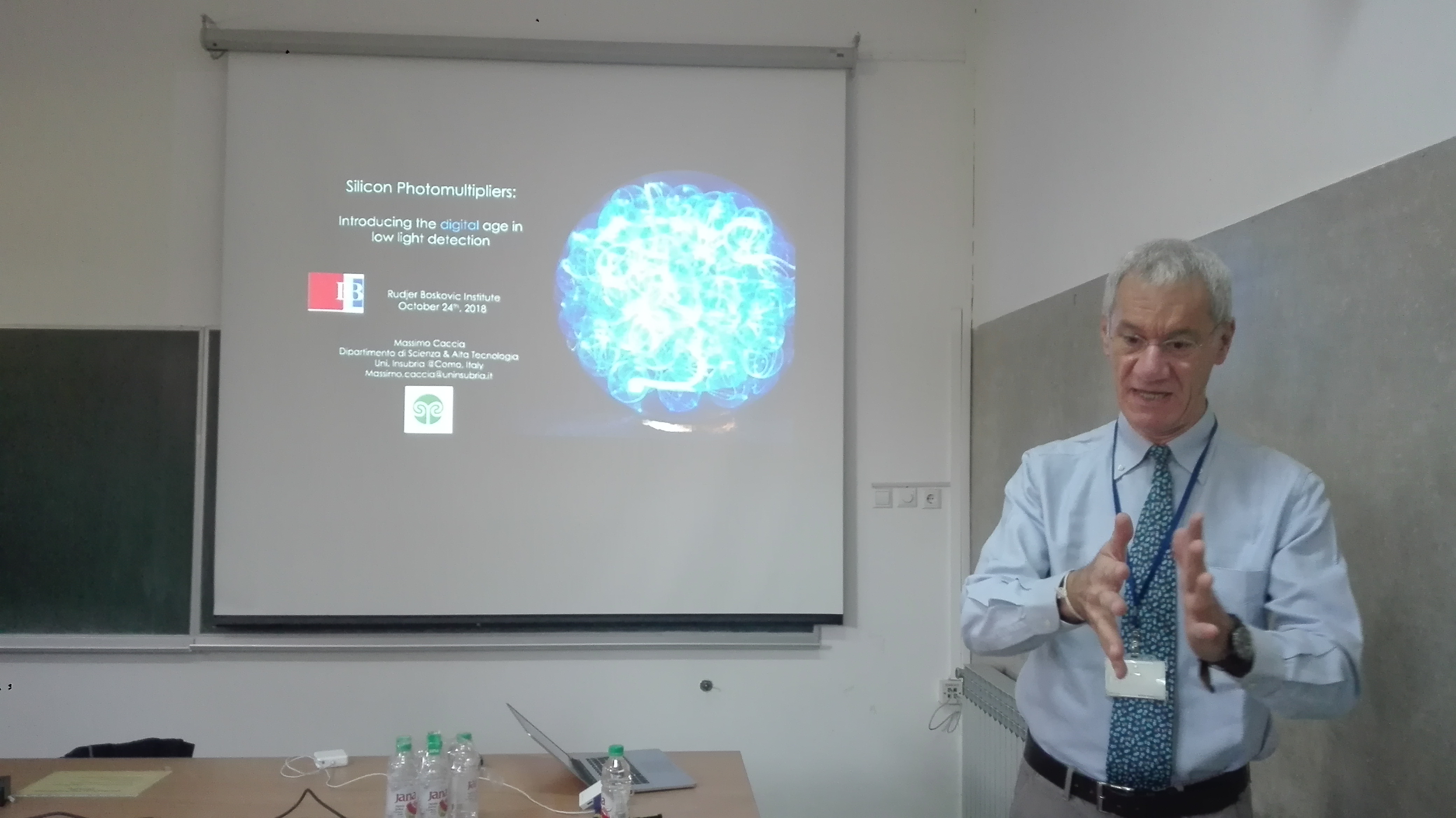
Abstract
Part 1
Part 2
Demonstration of SiPM start kit by CAEN s.p.a.
SP5600AN Educational Kit - Premium Version at CAEN web page
Thu 25.10.
Fibre sensors for in vivo dosimetry during radiotherapy, S. Lomazzi
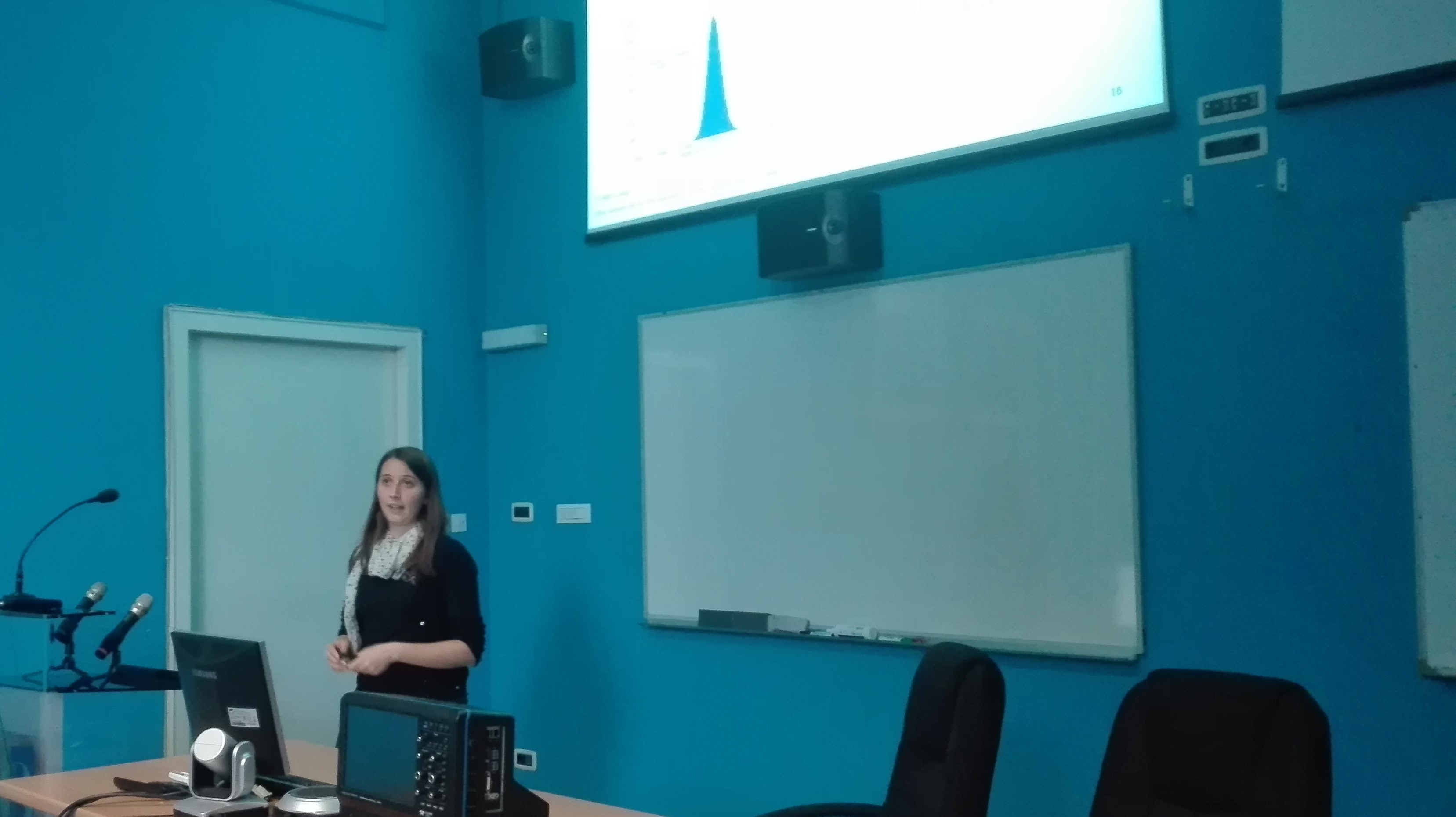
Abstract
Presentation
Silicon Photomultiplier based dual-readout fibre calorimeter: firsts results and the pathway beyond the proof-of-concept, R. Santoro
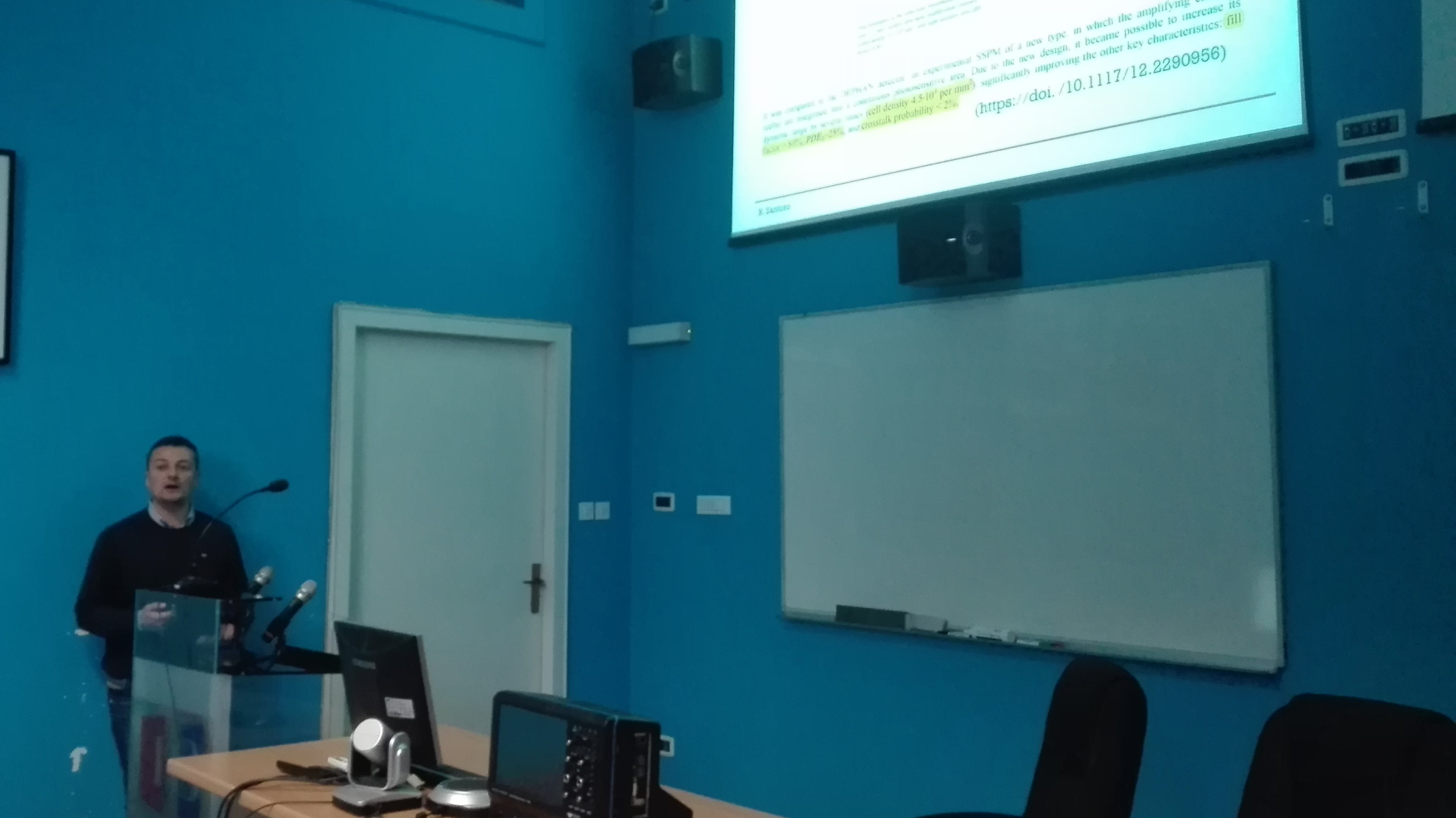
Abstract
Presentation
4. 9. 2018. Development of Novel Semiconductor Detectors In Xiangtan University
Speaker: Prof. Zheng Li, Xiangtan Technical University (XTU)
Location: Wing 1 lecture room (Supek), RBI
Participants: RBI and project staff
Abstract:
Development of novel large area Si drift detectors (SDD) and 3D-Trench-Electrode detectors have been carried
out in Xiangtan University. These detectors are applied for X-ray and particle detection in the field of high
energy physics, photon science, and space applications. Large area (600 mm2 and 314 mm2) SDD detectors have
simulated, designed in Xiangtan University, and been fabricated in its new Class-100 cleanroom high resistivity
Si detector processing facility. Simulations on the the new 3D-Trench-Electrode detectors have been carried out,
and results have shown great radiation hardness as compared to convention 2D planar detectors. Leakage current
and capacitance measurements have shown good results. Laser scan tests on the new 3D-Trench-Electrode detectors
have shown good sensitivity and good pixel separation.
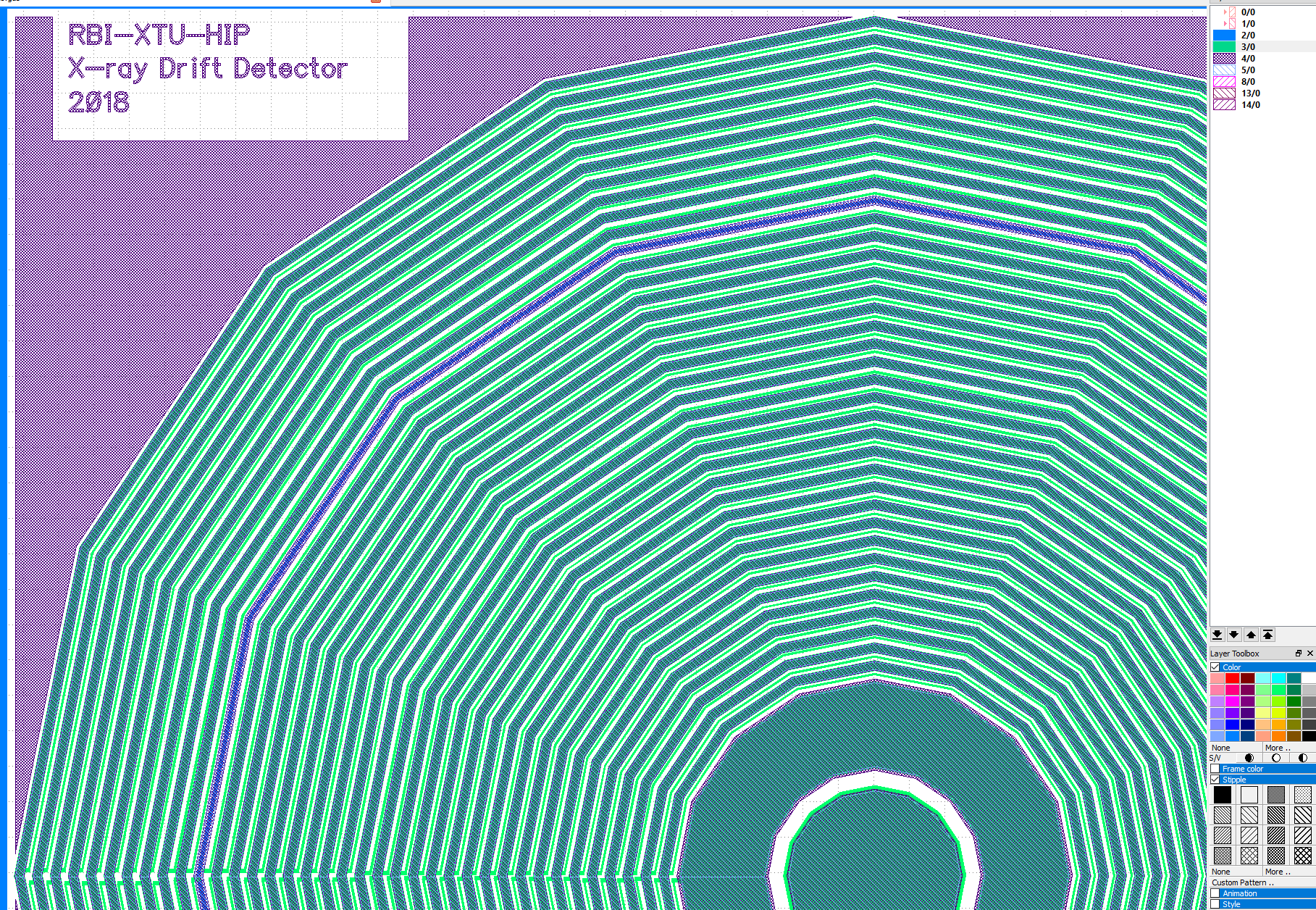
RBI-XTU drift detector mask design.
27. 2. 2018. The basics of Geant4 and possible applications
Speaker: Dr. Matti Kalliokoski, Ruder Boskovic Institute
Location: Van de Graaff seminar room, RBI
Participants: RBI and project staff
Abstract:
Geant4 is a C++ based simulation toolkit that is used widely in design and analysis
of high energy physics experiments, in space and radiation applications, and in medical physics.
It can be used to simulate the passage of particles through matter. Geant4 physics processes describe
electromagnetic and nuclear interactions of particles with matter, at energies from eV to TeV. In this
seminar presentation I will briefly go through the basics of Geant4 toolkit, and show some applications
from various fields from accelerator physics to space environment.
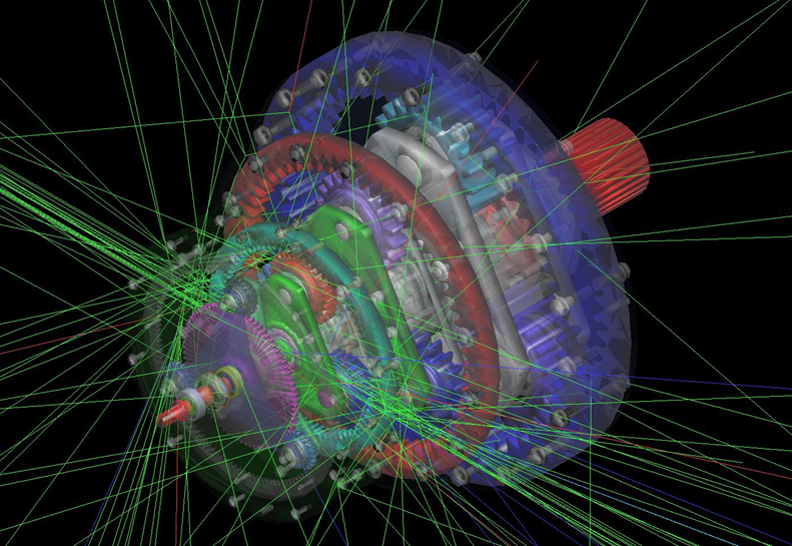
Geant4 simulation of a gearbox irradiated with neutrons.
26. 1. 2017. Alpha-screening of contaminated curved objects with flexible silicon
Speaker: Dr. Christian Schuster, University of York
Location: RBI
Participants: RBI and project staff
Abstract:
The detection of alpha radiation in the field can be challenging due to their short range, which is
typically only some centimeters in air. This problem is exacerbated inside contaminated pipeline systems
in the nuclear industry: there is currently no low cost solution available for measuring low levels of
alpha-contamination, like Pu-239, inside pipes, because cutting a long pipework into segments is expensive
and, therefore, incompatible for the inspection.
While previous methods mainly focused on indirect techniques, I will propose a novel approach based on a flexible sheet of 50 μm thin crystalline silicon. Following established fabrication steps of pn-junction diodes, we observe a very clear response to 5 MeV alpha-particles using a bespoke amplifier circuit. As a flexible detector offers 360-degree equidistant surface coverage and is able to adapt to the curvature of a given pipeline, I will show that our prototype device stands out as a low-cost and efficient solution for nuclear decommissioning.
Even if the sensor is aimed at the specific problem of assessing radioactive contamination in narrow pipe work, it can generally be adapted to a curved surface, such as barrels for contaminated waste. In my talk, I would like to discuss how it can also address requirements of nuclear and particle physics experiments.
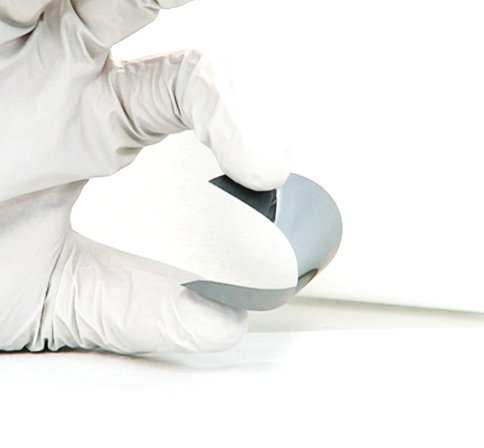
Crystalline silicon wafers become flexible at ca. 70 μm thickness. Accordingly, they can be bent to be used for screening the inner surface of a 2" diameter pipe for alpha-contamination and be mounted on an elastic inspection gauge.
